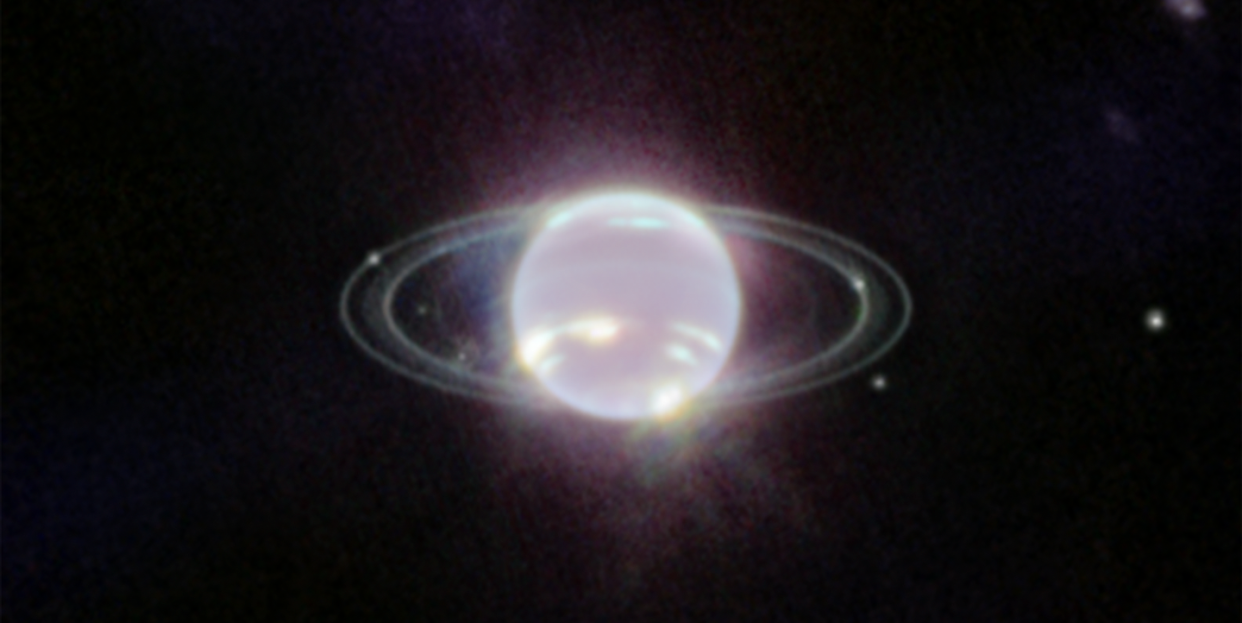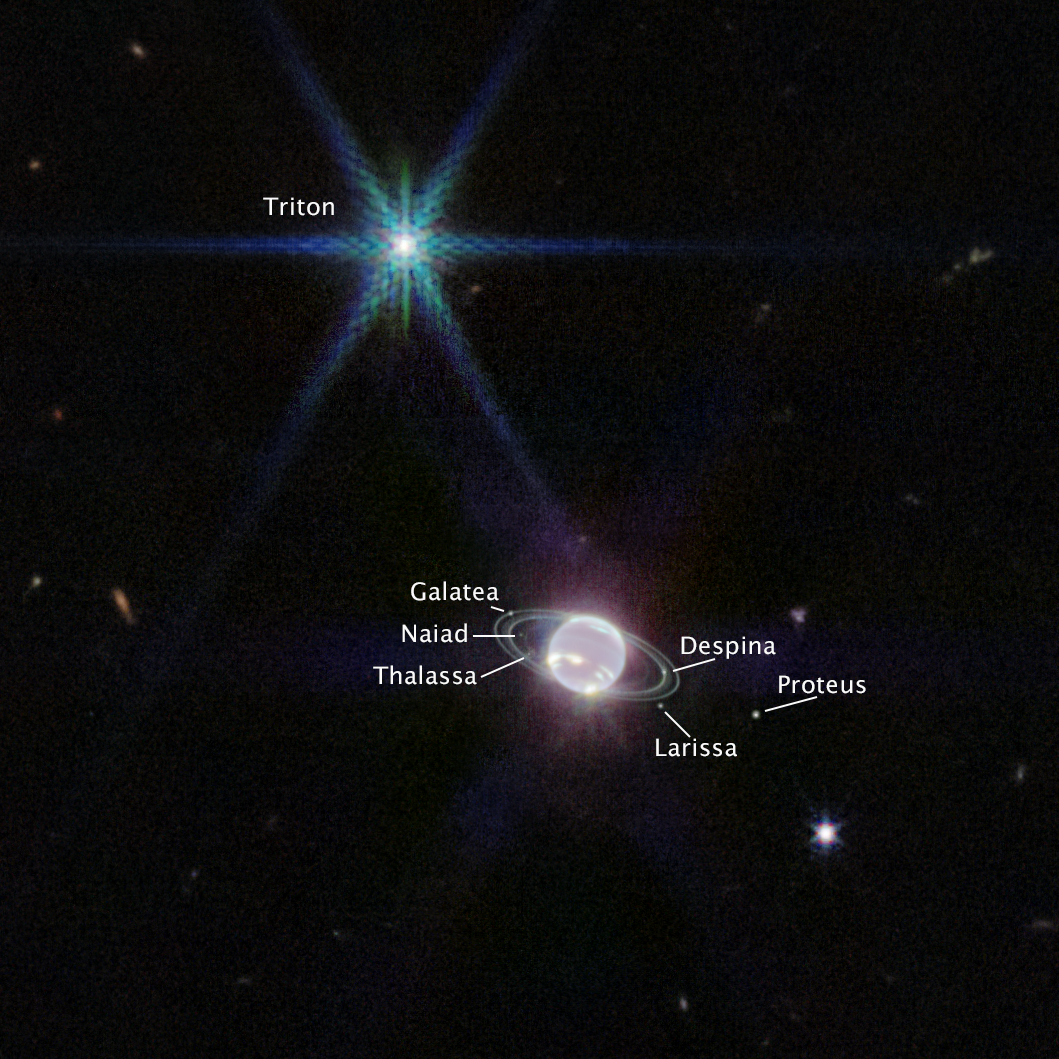The Webb Telescope Just Revealed a Gorgeous New Image of Neptune and Its Rings

It’s not as blue as we’re used to, but the image above is an unprecedented view of Neptune and its rings.
The James Webb Space Telescope captured a new view of seven of the ice giant’s 14 moons, too.
Astronomers plan to use Webb again to study Neptune and its large moon, Triton, in the coming year.
Through Webb’s eyes, one of the loneliest planets in our solar system doesn’t appear so blue after all. Ice giant Neptune, named after the Roman god of the sea, has a grayer visage and clear rings of fine dust and ice dance around it.
🔭 You love the cosmos. So do we. Let’s nerd out over it together.
Discovered in 1846 and admired for its cool blue shade since the Voyager 2 spacecraft snapped several close-up photos in 1989, Neptune has appeared for the first time in wavelengths in the near-infrared range, from 0.6 to 5 microns.
Voyager 2 was also the first to capture Neptune’s rings. The planet has at least five main rings and four prominent ring arcs with dust floating around them. Thanks to the precise stability of Webb’s Near-Infrared Camera (NIRCam), these rings appear more clearly than ever. “It has been three decades since we last saw these faint, dusty rings, and this is the first time we’ve seen them in the infrared,” Heidi Hammel, a Neptune system expert and interdisciplinary scientist for Webb, says in a NASA news release.

Neptune’s methane-rich composition absorbs infrared wavelengths, so it appears darker overall. Yet pale, streaky dots punctuate the relative darkness of Neptune in the Webb image. These are high-altitude methane-ice clouds, brightly reflecting sunligh. Powerful winds and storms whipping around Neptune may be visible as a thin bright line around the equator. Because the atmosphere is lower and gets warmer at the equator, infrared wavelengths glow more prominently than higher, cooler gases, according to the release.
The eighth planet from the sun, Neptune is more than 30 times as far from our home star as Earth is, making it incredibly cold. In fact, sunlight is 900 times as bright on Earth than on the ice planet. If you could stand on it in the middle of Neptune’s day, you would seem to be in twilight.
Seven of Neptune’s 14 moons are visible in Webb images, too, including Triton, which stands out more brightly than the planet due to its envelope of frozen, condensed nitrogen that reflects around 70 percent of sunlight hitting it. Triton is unusual because it may have been a Kuiper Belt object originally, making its home among a large group of icy objects beyond the orbit of Neptune; later, it pulled toward Neptune’s gravity. It’s the only moon that orbits Neptune backward (called a retrograde orbit.) Astronomers plan to use Webb to study Triton and Neptune further in the coming year.
You Might Also Like
